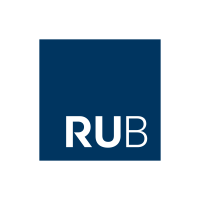Cold atmospheric pressure plasmas are used for surface decontamination or disinfection, e.g. in clinical settings. Protein aggregation has been shown to significantly contribute to the antibacterial mechanisms of plasma. To investigate the potential role of the redox-activated zinc-binding chaperone Hsp33 in preventing protein aggregation and thus mediating plasma resistance, we compared the plasma sensitivity of wild-type E. coli to that of an hslO deletion mutant lacking Hsp33 as well as an over-producing strain. Over-production of Hsp33 increased plasma survival rates above wild-type levels. Hsp33 was previously shown to be activated by plasma in vitro. For the PlasmaDerm source applied in dermatology, reversible activation of Hsp33 was confirmed. Thiol oxidation and Hsp33 unfolding, both crucial for Hsp33 activation, occurred during plasma treatment. After prolonged plasma exposure, however, unspecific protein oxidation was detected, the ability of Hsp33 to bind zinc ions was decreased without direct modifications of the zinc-binding motif, and the protein was inactivated. To identify chemical species of potential relevance for plasma-induced Hsp33 activation, reactive oxygen species were tested for their ability to activate Hsp33 in vitro. Superoxide, singlet oxygen and potentially atomic oxygen activate Hsp33, while no evidence was found for activation by ozone, peroxynitrite or hydroxyl radicals.
| Field | Value |
|---|---|
| Publisher | |
| Authors | |
| Release Date | 2023-12-06 |
| Identifier | ca06a39f-b811-4552-b1fe-ab9f2abe87b0 |
| Permanent Identifier (URI) | |
| Is supplementing | |
| Plasma Source Name | |
| Plasma Source Application | |
| Plasma Source Specification | |
| Plasma Source Properties | DBD: V(RMS) = 13.5 kV, trigger frequency = 300 Hz, diameter = 20 mm
µAPPJ: frequency = 13.56 MHz, V(RMS) = 230 V |
| Language | English (United States) |
| Plasma Source Procedure | If not indicated otherwise, plasma treatment was carried out using the PlasmaDerm dielectric barrier discharge (DBD) with an electrode diameter of 20 mm. Plasma was ignited in ambient air using VRMS=13.5 kV and a trigger frequency of 300 Hz. Samples (40 μl) were placed on top of a metal plate on a grounded counter electrode with a 1 mm distance to the driven electrode. In addition, a microscale atmospheric pressure plasma jet (μAPPJ) was used. Helium (1.4 slm, 5.0 purity) with varying oxygen admixtures (4.8 purity) was used as feed gas. Plasma ignition was driven with 13.56 MHz and 230 VRMS. The distance of the sample to the nozzle of the jet was varied from 0 to 20 mm. |
| License | |
| Plasma Medium Name | |
| Plasma Medium Properties | uncontrolled |
| Plasma Target Name | |
| Contact Name | Bandow, Julia E. |
| Plasma Target Properties | Heat shock protein 33 (Hsp33), purified from Escherichia coli expression strain in 40 mM KPi buffer, pH 7.5 |
| Plasma Target Procedure | Prior to any experiment employing Hsp33, the protein was reduced (Hsp33red) by adding 5 mM DTT and 115 μM ZnCl2 to 5 mg ml−1 Hsp33. This was followed by incubation at 37°C for 2 h. Chemically oxidized Hsp33 (Hsp33HOCl) was used as a positive control. To generate it, sodium hypochlorite was diluted in water yielding an equimolar mixture of hypochlorous acid (HOCl) and its conjugate base (OCl−). Hsp33red was oxidized by incubation with a 50-fold molar excess of HOCl at 30°C and 300 rpm for 10 min. After reduction or oxidation, Hsp33red and Hsp33HOCl were purified using the Micro Bio-SpinColumns-P30 according to manufacturers’ instructions. |
| Contact Email | |
| Public Access Level | Public |
| Funding Agency | |
| Project | |
| Subproject |
Data and Resources
- Figure 1a Survival Ratesxlsx
Relevance of hslO for plasma resistance. Survival rates after 60 s plasma...
Download - Figure 1b Survival longer treatmentxlsx
Survival of E. coli wild-type and the complemented strain ΔhslO+ pCA24N::...
Download - Figure 2a Plasma stability Hsp33xlsx
Plasma stability of Hsp33. Protein concentration of Hsp33 as a function of...
Download - Figure 2b Hsp33 Degradationxlsx
Terminal amino functions as a function of different plasma treatment times...
Download - Figure 3a Plasma-induced Hsp33 activationxlsx
Determination of relative chaperone activity and thiol oxidation after...
Download - Figure 3b CD spectra Hsp33xlsx
Far-UV CD spectra of Hsp33red, Hsp33HOCl, and plasma treated Hsp33. Hsp33...
Download - Figure 4a Hsp33 Carbonylationxlsx
Carbonylation level of plasma-treated Hsp33 as measured mixing DNPH with...
Download - Figure 4b Hsp33 Tryptophan fluorescence xlsx
Zinc-induced conformational changes of Hsp33HOCl or plasma-oxidized Hsp33 (...
Download - Figure 4c,d Hsp33 zincon assayxlsx
Zinc binding ability of chemically (Hsp33HOCl) or plasma-oxidized (P30, P60...
Download - Figure 5a,b Superoxide xlsx
Hsp33 activation by superoxide. Relative chaperone activity and thiol...
Download - Figure 5c,d singlet oxygenxlsx
Hsp33 activation by singlet oxygen. Relative chaperone activity and thiol...
Download - Figure 5e,f atomic oxygenxlsx
Hsp33 was treated for 30 s with the effluent of the plasma jet, while the...
Download - Figure 6 Hsp33 µAPPJ activationxlsx
Distance-dependent activation of Hsp33 activation using the μAPPJ plasma jet...
Download - Figure 7 ozone degradationxlsx
Ozone-dependent Hsp33 degradation. Hsp33 was treated for 60 s with the...
Download - Figure 8a peroxynitrite xlsx
Investigation of Hsp33 activation upon treatment with peroxynitrite....
Download - Figure 8b hydroxyl radicalsxlsx
Relative chaperone activity at different hydrogen peroxide concentrations is...
Download - Figure 9 Scavenger xlsx
Plasma-induced Hsp33 activation in the presence of scavengers. Hsp33 was...
Download


![[Open Data]](https://assets.okfn.org/images/ok_buttons/od_80x15_blue.png)